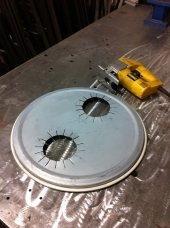





 2
2










taking things to their illogical extreme, one conversation at a time...
 1
1


















taking things to their illogical extreme, one conversation at a time...








taking things to their illogical extreme, one conversation at a time...




A lot of things come out of nowhere, so look everywhere.




Experiment, invent, build, grow, share....lead by example people!!!





dan collins wrote: I used round bales of straw to mulch. If you have friend or two they can be rolled out like mats over the berm. Worked great, took very little time and small $. I found a medium bale covers about 100m of exposed dirt. The bales of straw I used were old ones that were left in a neighbouring farm field for a couple of years, thus they were free, just had to drag them home after getting permission.
taking things to their illogical extreme, one conversation at a time...





|
He's dead Jim. Grab his tricorder. I'll get his wallet and this tiny ad:
The new kickstarter is now live!
https://www.kickstarter.com/projects/paulwheaton/garden-cards
|





